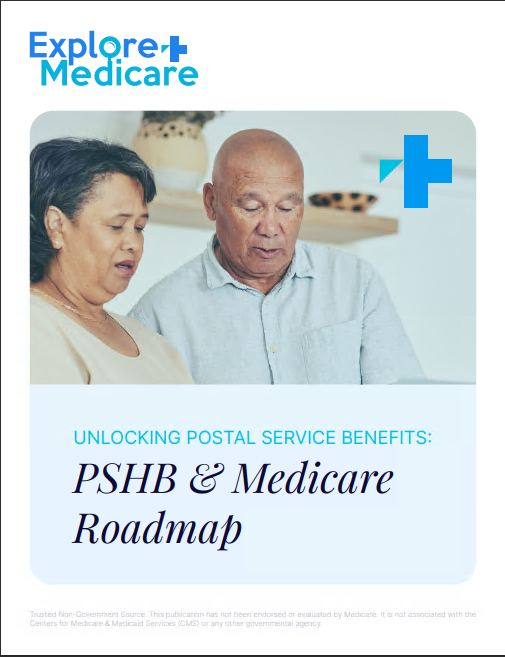Key Takeaways
-
Medicare billing can get complicated due to varying costs, deductibles, and co-pays across different plans. Understanding these charges helps you avoid unexpected expenses.
-
Reviewing bills, checking Explanation of Benefits (EOB) statements, and verifying provider networks can prevent common billing errors and overcharges.
Why Medicare Billing Can Feel So Confusing
Medicare offers a lot of coverage options, but with those choices come different cost structures, deductibles, and co-pays. You might sign up for a plan thinking you understand your costs, only to get a bill that looks completely different from what you expected. If this sounds familiar, you’re not alone. Many enrollees struggle with Medicare billing confusion, and the key to handling it is knowing what charges to expect and how to review them properly.
Understanding the Different Medicare Costs
Medicare costs are split into various categories, including premiums, deductibles, copayments, and coinsurance. Each of these affects how much you pay for healthcare services.
Premiums: What You Pay Monthly
-
Medicare Part A: Most people don’t pay a monthly premium for Part A if they have enough work credits. However, if you don’t qualify for premium-free Part A, you must pay a monthly cost.
-
Medicare Part B: Requires a monthly premium, which is adjusted based on income.
-
Medicare Part D: Monthly premiums vary by plan and location.
-
Medicare Advantage (Part C): Premiums depend on the specific plan you choose.
Deductibles: What You Pay Before Coverage Kicks In
-
Medicare has different deductibles for each part of the program. In 2025, the deductible for Part B is $257, while Part A has a deductible of $1,676 per benefit period.
-
Part D plans have their own deductibles, which can go up to $590.
Copayments and Coinsurance: Your Share of the Costs
-
Copayments are fixed amounts you pay for doctor visits, prescriptions, or other services.
-
Coinsurance is the percentage you pay for covered services after meeting your deductible. For example, Medicare Part B typically covers 80% of approved costs, leaving you responsible for the remaining 20%.
Common Billing Mistakes That Cause Confusion
Understanding how Medicare works is one thing, but avoiding billing errors is another challenge altogether. Here are some common mistakes that lead to confusion and how to fix them:
1. Unexpected Charges from Out-of-Network Providers
Even if you choose a Medicare Advantage plan with a network of doctors, not all providers may accept your plan. If you receive care from an out-of-network provider, you could face much higher costs than expected.
Solution: Always confirm whether a provider is in-network before scheduling an appointment.
2. Incorrect Billing Codes
Medical providers use specific billing codes when submitting claims to Medicare. If the wrong code is used, your claim could be denied, or you may receive an incorrect bill.
Solution: If something looks off on your bill, call your provider’s billing department to verify the codes before paying.
3. Services Not Covered by Medicare
Certain treatments and services are not covered under Original Medicare, but they may be included in Medicare Advantage or Medigap plans. If Medicare doesn’t cover a service, you’ll have to pay the full cost out of pocket.
Solution: Always check whether a service is covered before receiving treatment.
4. Duplicate Billing
Sometimes, providers accidentally bill for the same service twice. This can happen due to system errors or administrative mistakes.
Solution: Carefully review your Explanation of Benefits (EOB) statements to ensure you’re not being charged twice for the same service.
How to Review and Dispute Medicare Bills
Mistakes happen, and if you think you’ve been overcharged or incorrectly billed, you have options. Follow these steps to review and dispute Medicare charges.
Step 1: Review Your Medicare Summary Notice (MSN) or Explanation of Benefits (EOB)
-
The MSN is a statement that Medicare sends every three months, detailing the services you received and what Medicare covered.
-
The EOB is a similar document that Medicare Advantage or Part D enrollees receive from their private plan provider.
-
Compare these statements with your medical bills to ensure accuracy.
Step 2: Contact Your Provider
-
If something looks wrong, contact your doctor’s billing office to clarify the charge.
-
Sometimes, a simple phone call can resolve the issue without requiring further action.
Step 3: File an Appeal
-
If you believe Medicare should have covered a charge but didn’t, you can appeal the decision.
-
Appeals must be filed within 120 days of receiving the Medicare Summary Notice.
Step 4: Contact Medicare for Further Assistance
-
If you can’t resolve the issue directly with your provider, you can contact Medicare at 1-800-MEDICARE (1-800-633-4227) for help.
Preventing Future Billing Issues
To avoid future Medicare billing headaches, take these preventive steps:
1. Keep Track of All Medical Services You Receive
Maintain a personal health record that includes:
-
Dates of doctor visits
-
Treatments received
-
Medications prescribed
2. Double-Check Provider Networks Before Scheduling Appointments
Even if you have been seeing the same doctor for years, networks change. Always confirm that your provider is still in-network.
3. Sign Up for Medicare’s Online Portal
The Medicare.gov website offers a way to track claims and billing history in real time, so you can spot discrepancies early.
4. Ask Questions
If you don’t understand a charge, ask your provider for clarification before paying the bill.
Taking Control of Your Medicare Billing Experience
Medicare billing confusion is common, but understanding your costs and how billing works can help you stay on top of your healthcare expenses. By regularly reviewing your statements, verifying provider networks, and knowing how to dispute incorrect charges, you can avoid unnecessary stress and unexpected costs. Medicare may be complex, but taking proactive steps ensures you’re only paying for what you actually owe.









